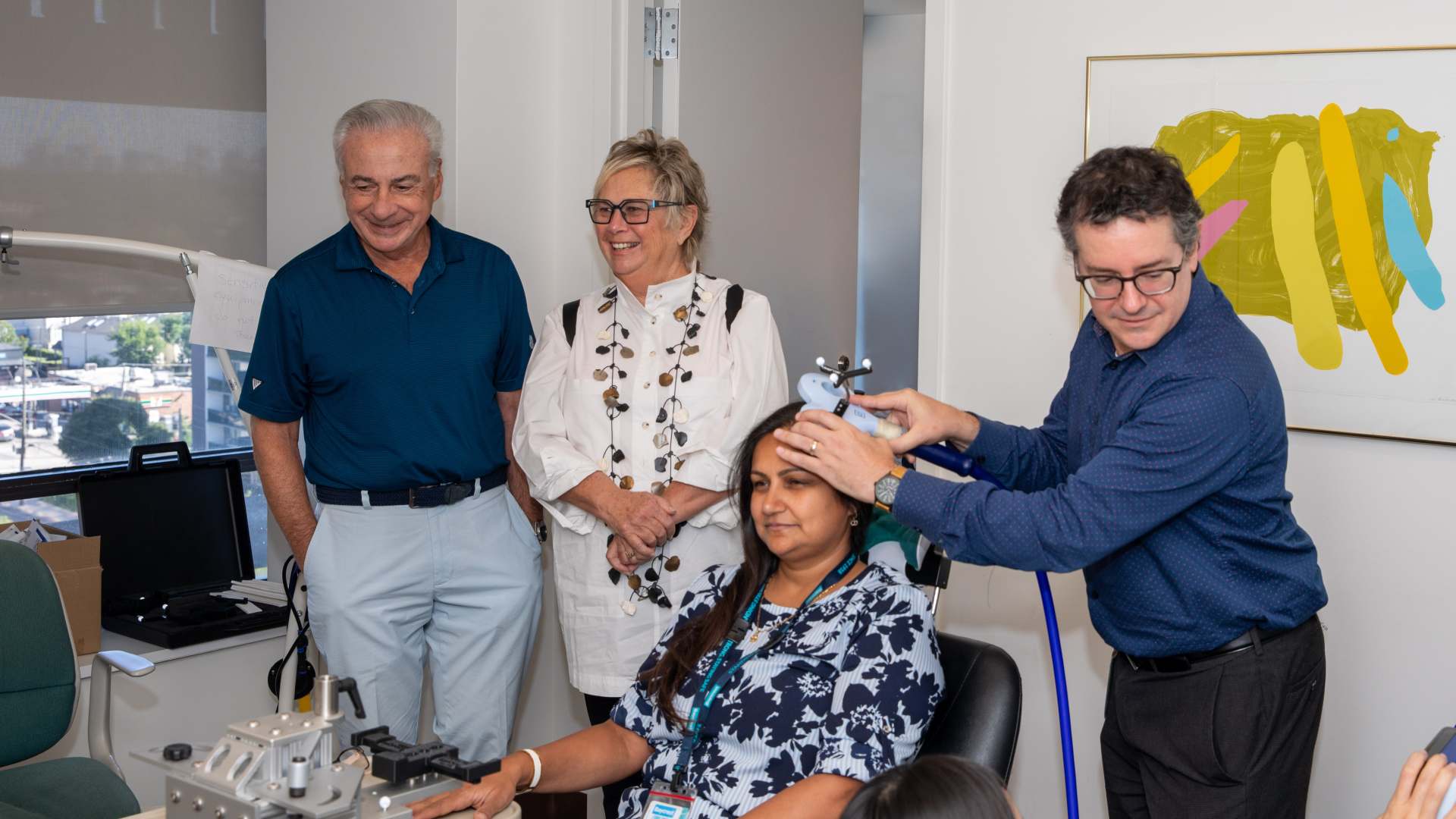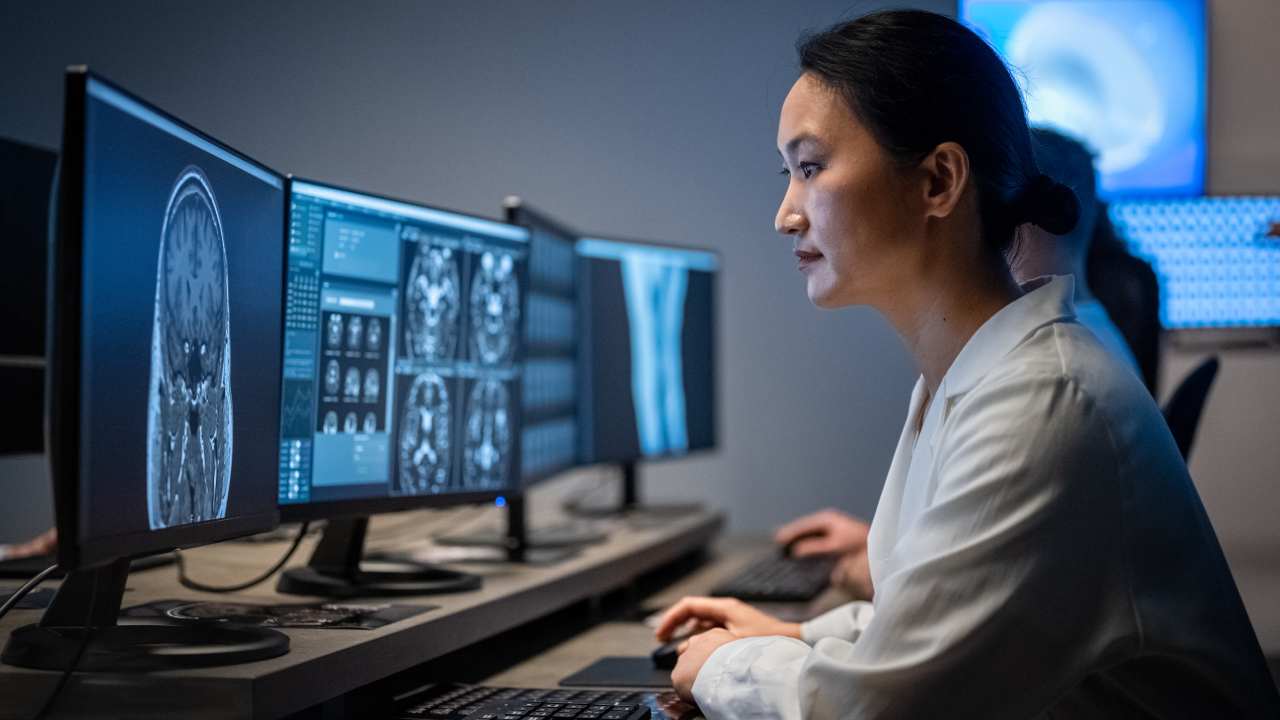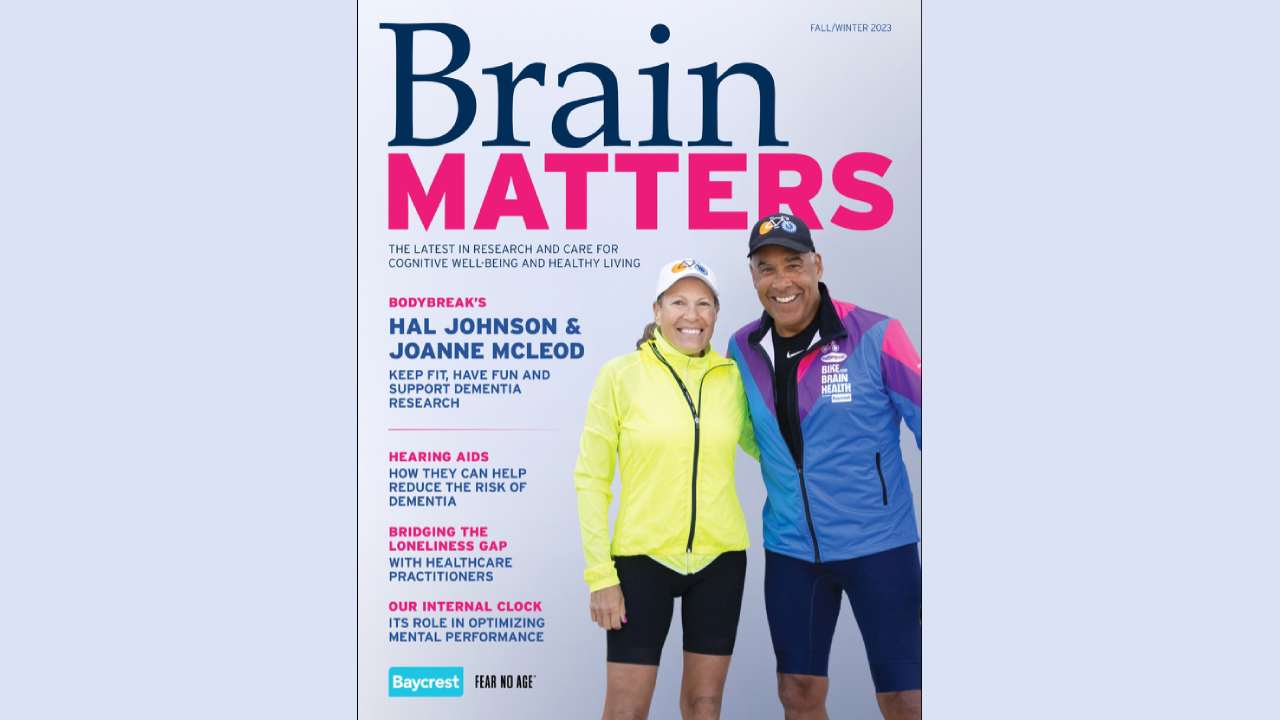
Discussions about defeating dementia often focus on the search for some kind of “magic pill,” but in the meantime, other pathways are quietly making steady progress.
The Bresver Neuromodulation & Therapeutics Program encompasses research that explores the potential benefit of therapies applied over the scalp. It’s part of a “predictive neuroscience for precision aging” approach at Baycrest.
“Non-invasive neuromodulation of the brain is one of the most promising interventions for prevention of neurodegenerative conditions, including Alzheimer’s disease,” says Dr. Linda Mah, Senior Clinician Scientist at Baycrest’s Rotman Research Institute.
One modality is transcranial magnetic stimulation (TMS), involving an electromagnetic coil that uses magnetic fields to stimulate nerve cells in the brain. It has been shown to be effective in treating major depressive disorder, a known risk factor for dementia.
“TMS studies in other high-risk populations including mild cognitive impairment, a precursor to Alzheimer’s disease, have demonstrated short-term effectiveness, but much more research is needed to establish whether TMS has long-term benefits on cognition, and can prevent or delay onset of dementia,” says Dr. Mah.
She and her colleague Dr. Jed Meltzer, Canada Research Chair in Interventional Cognitive Neuroscience, are conducting clinical trials using a special coil that can stimulate a region fairly deep in the brain. The anterior cingulate cortex (ACC) is involved in higher cognitive processes such as executive function, or the ability to multi-task, set goals and priorities, and monitor and adjust behaviour to attain goals. The ACC also supports regulation of emotions and is implicated in the neurobiology of depression.
“Studies of ‘superagers’ – older adults who perform as well as their younger counterparts on tests of memory and other cognitive domains – show larger volumes of ACC and more extensive neural connections from the ACC to other parts of the brain, including those that support memory processes,” says Dr. Mah. “Thus, the ACC is considered a critical brain region for successful cognitive aging.”

“Many older adults with a family member who has been diagnosed with Alzheimer’s are concerned about their own future risk,” he says, noting that maternal history is associated with at least 1.5 times increased risk of developing the disease.
“Through neuromodulation of the anterior cingulate cortex, we expect to increase the brain’s resilience against cognitive decline, which may delay or prevent onset of future dementia.”
Another modality is photobiomodulation (PBM), also known as low-level laser therapy.
Only recently did scientists demonstrate the successful delivery of near-infrared light through the skull into the brain, and there are currently a few clinical PBM trials around the world, including at Harvard Medical School and by the U.S. Department of Veterans Affairs. PBM is harmless and easy to administer, and there are already commercial devices that can emit near-infrared light onto the skull. It has long been known that this type of light can reduce inflammation and accelerate tissue healing. Dr. Jean Chen believes she can demonstrate how PBM does this inside the living brain.
Dr. Chen, Canada Research Chair in Neuroimaging of Aging, says the evidence supporting PBM for Alzheimer’s disease in humans is mounting, but the patient outcomes are mixed, much like for other non-invasive treatments. However, her research at Baycrest aims to change that.
“To get more consistent results, one key question we must answer first is how different dosage factors such as light energy, light pulsation rate, wavelength, as well as skin tone can affect the efficacy of PBM. Without this knowledge, PBM cannot be tailored to each individual’s needs, resulting in it being effective for some but not for others. This is the driver of our research.”
Mapping the effects includes determining whether cellular function and blood circulation improve. Eventually, when more is known, family doctors could potentially prescribe light therapy as a treatment for early dementia where patients can use the devices at home.
Meanwhile, Dr. Howard Chertkow, a neurologist and Chair in Cognitive Neurology and Innovation, and scientific associate Dr. Tyler Roncero are running studies using transcranial direct current stimulation (tDCS), which circulates a very low-intensity current through the skull.
Their tDCS studies have already been published in major journals and garnered enthusiastic support from the U.S. National Institute of Health to carry on a larger therapy study. In collaboration with U.S. labs, the team is conducting a Phase 2 clinical trial exploring the benefits of neuromodulation for primary progressive aphasia, a condition that slowly damages parts of the brain that control speech and language.
Another study is trying to improve walking ability for patients with progressive supranuclear palsy, a rare disease that affects walking, balance, eye movements and swallowing. Dr. Roncero has developed novel methods that direct the electricity deep into the brain where it can help these problems.
Two other studies aim to improve cognitive function and language ability for patients with early Alzheimer’s disease.
“I like reminding people that tDCS isn’t new and is already being used for some conditions, like depression and stroke. What we are investigating is whether these same benefits can be observed in people with different forms of dementia,” says Dr. Roncero. “Of course, one benefit of using a technology already approved for clinical use is that participants who do experience a benefit have the option of purchasing their own machine for continued stimulation therapy at home.”
The Bresver Neuromodulation & Therapeutics Program is being coordinated by Dr. Roncero so that the labs can increasingly share results and work together.
Related Articles: Research









